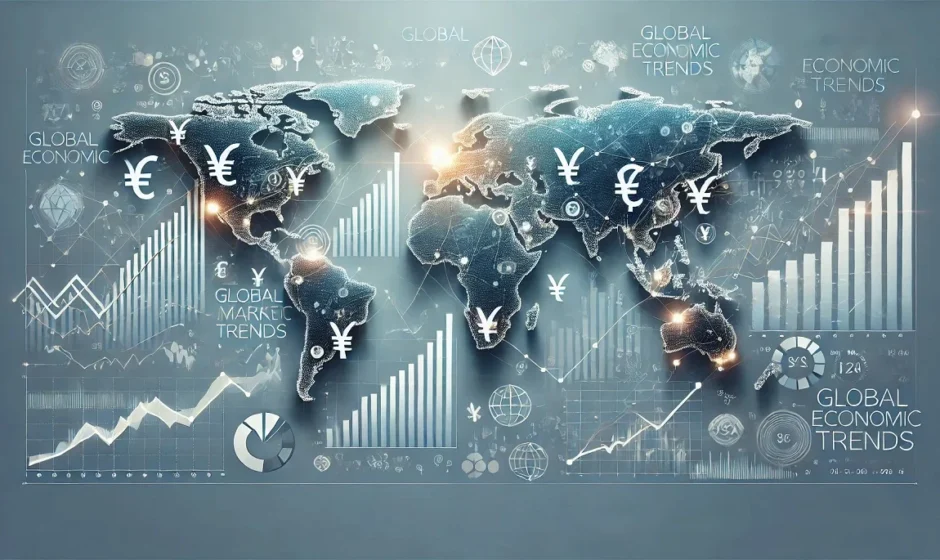The Indian stock market doesn’t operate in isolation. As one of the world’s fastest-growing major economies, India is deeply intertwined with the global financial system. Shifts in international economic trends—whether it’s a tweak in U.S. interest rates, a spike in crude oil prices, or a geopolitical flare-up—can send ripples through Indian equities. For investors, understanding these global influences is key to navigating the opportunities and risks in Indian markets. Let’s dive into how these trends shape India’s financial landscape.
Foreign Institutional Investors (FIIs): The Global Money Trail
Foreign Institutional Investors (FIIs) are a major driver of Indian stock market movements. These international funds invest heavily in Indian equities, and their decisions often hinge on global economic conditions. When the global economy is booming, FIIs funnel money into emerging markets like India, pushing stock prices higher. But when uncertainty strikes—think rising inflation or geopolitical tensions—they tend to pull back, triggering selloffs.
Take recent events as an example. Over the past six months, foreign investors withdrew a staggering $29 billion from Indian markets, contributing to a 13% drop in the NSE Nifty 50 index. This exodus was partly driven by global factors, including a shift in capital toward China, where stimulative policies have made markets more attractive. When FIIs retreat, Indian stocks feel the heat, underscoring how sensitive the market is to global investor sentiment.
U.S. Monetary Policy: The Ripple Effect
Decisions by the U.S. Federal Reserve have an outsized impact on markets worldwide, including India. When the Fed hikes interest rates to tame inflation, U.S. assets become more appealing, prompting capital to flow out of emerging markets. This weakens the Indian rupee, raises borrowing costs for Indian companies, and puts downward pressure on stock prices. On the flip side, rate cuts can spark inflows into India, boosting market performance.
Recently, the Fed cut rates by 0.25% to 4.5%, but its hawkish outlook dampened hopes for further reductions. This strengthened the U.S. dollar and lifted bond yields, making Indian equities less attractive. The result? A 2,300-point plunge in the Sensex over five days, highlighting how U.S. policy reverberates through Indian markets.
Global Inflation and Commodity Prices: A Double-Edged Sword
India’s reliance on imported commodities, especially crude oil, makes it vulnerable to global price swings. As a net importer, rising oil prices—often fuelled by supply disruptions or geopolitical tensions—increase India’s import bill, widen its trade deficit, and stoke domestic inflation. This squeezes corporate profits, particularly in sectors like manufacturing and logistics, dragging down stock performance.
For instance, recent volatility in crude oil prices, tied to conflicts in oil-producing regions, has raised concerns about India’s economic stability. Higher energy costs erode margins and dampen investor confidence, while global inflationary pressures can force the Reserve Bank of India (RBI) to tighten monetary policy, adding further strain on markets.
Geopolitical Tensions: The Uncertainty Factor
Global instability—whether it’s trade wars, tariffs, or armed conflicts—creates uncertainty that rattles financial markets. For India, geopolitical tensions can disrupt trade and export competitiveness. Take U.S. tariffs on steel and aluminium, which have scrambled global supply chains and hurt Indian exporters. Similarly, tensions between major economies like the U.S. and China can spark broader market volatility.
When uncertainty spikes, investors often flee to safe-haven assets like gold or U.S. Treasuries, draining capital from riskier markets like India. This flight to safety has contributed to recent corrections in Indian stocks, showing how global risks can overshadow domestic fundamentals.
Technological Advancements: A Sector-Specific Boost
Global tech trends also influence Indian markets, particularly in the IT and fintech sectors. India’s IT industry thrives on demand from developed markets like the U.S. When global tech spending rises, Indian IT firms see revenue growth, lifting their stock prices. Conversely, a slowdown in global innovation or investment can weigh on these companies.
Emerging technologies like AI and blockchain are another factor. Indian firms that harness these trends can gain a competitive edge, driving stock gains, while those that fall behind may struggle. This global tech influence adds a dynamic layer to India’s market performance.
India’s Resilience: A Balancing Act
Despite these global pressures, India’s economy remains a bright spot. With GDP growth projected at 6.3% to 6.8% for FY26 (per the Economic Survey 2024-25), strong domestic consumption, and government-led initiatives in infrastructure and digitalization, India has a solid foundation. This resilience helps cushion the blow from global headwinds.
Yet, it’s not immune. The recent market downturn—a $1 trillion loss in value—shows that global trends can still dominate. For investors, the challenge is to balance India’s domestic strengths with its exposure to international forces.
Navigating the Global Influence
So, how can investors tackle these dynamics? Here are some practical tips:
- Diversify Your Portfolio: Spread investments across sectors and asset classes to reduce risk from global shocks.
- Track Global Cues: Watch U.S. interest rates, oil prices, and geopolitical news to anticipate market shifts.
- Lean on Domestic Growth: Focus on sectors tied to India’s internal strengths, like consumer goods and infrastructure.
- Stay Informed: Keep up with economic data and trends to adjust your strategy in real time.
Conclusion
From FII flows and U.S. monetary policy to commodity prices and geopolitical risks, global economic trends play a pivotal role in shaping Indian markets. While India’s robust growth offers some protection, its markets remain sensitive to the world beyond its borders. For investors, the key to success lies in understanding these influences and adapting to them. By staying informed and strategic, you can turn global challenges into opportunities in India’s dynamic financial landscape.



